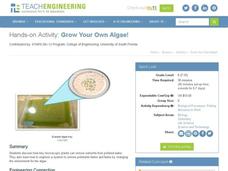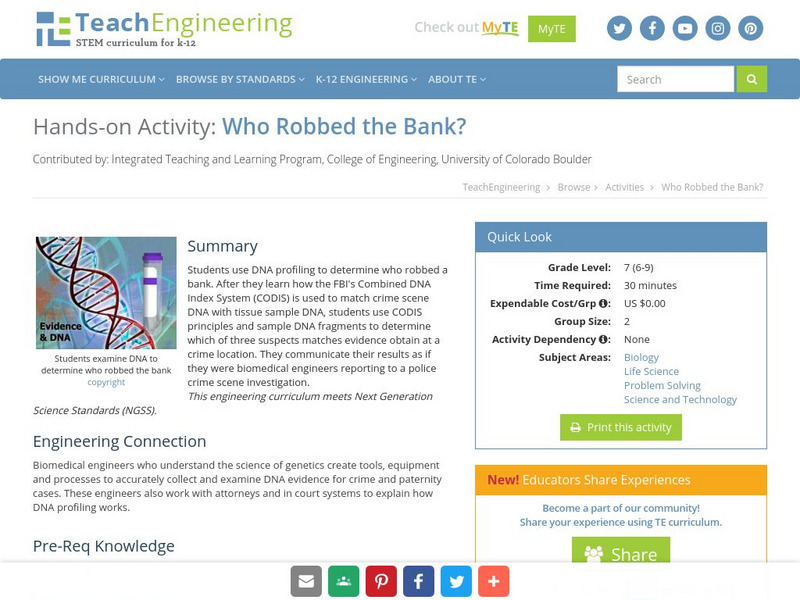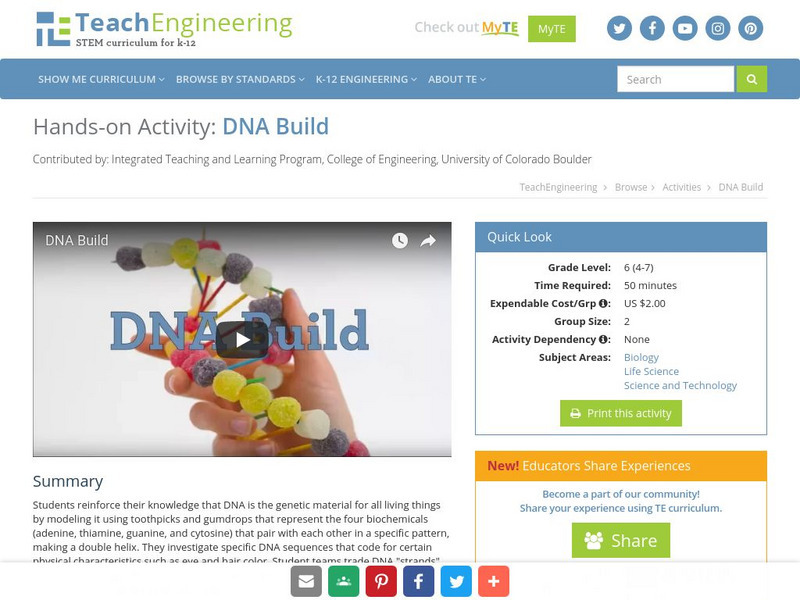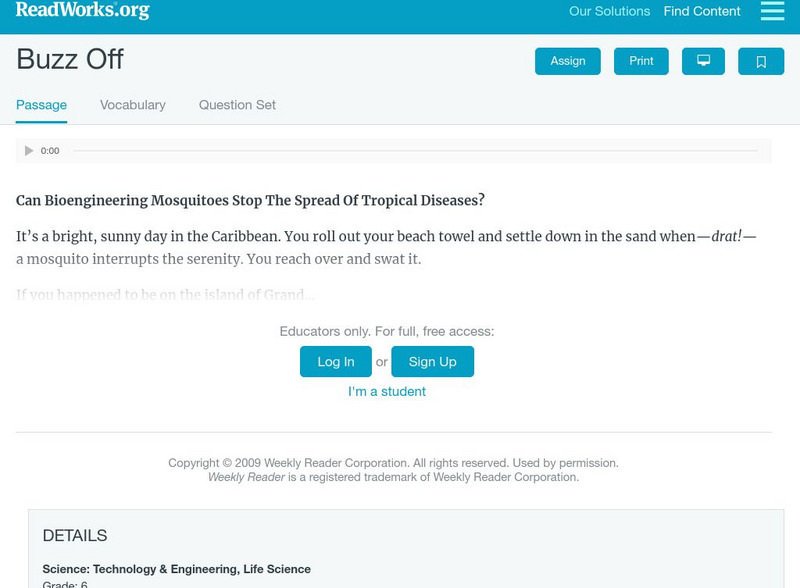Serendip
Genetic Engineering Challenge – How Can Scientists Develop a Type of Rice That Could Prevent Vitamin A Deficiency?
Brown rice contains vitamins B and E, while white rice lasts longer in storage. The availability of rice around the world makes it a great candidate for genetic engineering. Scholars apply their knowledge of genetic engineering to solve...
Howard Hughes Medical Institute
Tracking Genetically Modified Mosquitoes
What's that buzzing in your ear? An insightful lesson about genetically modified mosquitoes! Partnered pupils explore the creation, release, and monitoring of mosquitoes designed to reduce the mosquito population. After watching a video,...
Serendip
Golden Rice – Evaluating the Pros and Cons
More than half the world's population eats rice as a daily staple ... imagine if that rice could prevent illness. Scientists genetically engineered rice to include vitamin A for just that purpose. However, room for debate still exists....
Howard Hughes Medical Institute
Classroom Activities: Stem Cells and Diabetes
How close are we to a cure for diabetes? It seems the cure which has a connection to stem cell research is a possibility! Learners explore the concept of stem cells with an engaging hands-on activity. A PowerPoint presentation provides...
Novelinks
Things Fall Apart: Problematic Situation
If you could pick characteristics you would want your child to possess, what would they be? To better understand Okonkwo, one of the key characters in Things Fall Apart, class groups engage in an activity that asks them to consider this...
Teach Engineering
DNA Forensics and Color Pigments
Use food coloring in electrophoresis. The last segment in a four-part series mimics DNA fingerprinting by using chromatography. Teams conduct chromatography on food coloring to find colors that use similar pigmentation in their makeup.
Teach Engineering
Inside the DNA
Get your class to take a closer look at DNA. Pupils conduct research to determine the methods used by scientists to analyze the molecular structure of DNA. The class members investigate different types of molecular imaging along with gel...
Teach Engineering
Grow Your Own Algae!
Develop a model of a wastewater treatment center. The last activity of the unit has pupils mix a lake water sample into a tank of water containing fertilizers. Over time, the algae from the lake water grows and removes the nutrient-rich...
Teach Engineering
Corn for Fuel?!
Can corn power the world? Young scientists learn about how corn and other plants can provide renewable biofuels in the second of nine lessons. They set up an experiment to investigate how different variables affect plant growth. All of...
Howard Hughes Medical Institute
Natural Selection and the Evolution of Darwin's Finches
Darwin explained the connection between species of finches 150 years before scientists understood DNA. Technology and progressing science proved he was right, yet many struggle to understand how natural selection happens. Scholars use...
TeachEngineering
Teach Engineering: Bacteria Transformation
Students construct paper recombinant plasmids to simulate the methods genetic engineers use to create modified bacteria.
Science Buddies
Science Buddies: Project Ideas: Experiment With Genetically Modified Seeds
Compare the growth of normal plants with plants that have been genetically modified to make them resistant to the chemical herbicide Roundup. The Science Buddies project ideas are set up consistently beginning with an abstract,...
TeachEngineering
Teach Engineering: Who Robbed the Bank?
Students use DNA profiling to determine who robbed a bank. After they learn how the FBI's Combined DNA Index System (CODIS) is used to match crime scene DNA with tissue sample DNA, students use CODIS principles and sample DNA fragments...
TeachEngineering
Teach Engineering: Heredity Mix 'N Match
This site includes a lesson plan designed to teach students how genetic traits are passed down from parents to offspring. Students will explore such concepts as random selection, chrosomes, genotypes and phenotypes using jelly beans and...
TeachEngineering
Teach Engineering: Dna Build
Students reinforce their knowledge that DNA is the genetic material for all living things by modeling it using toothpicks and gumdrops that represent the four biochemicals (adenine, thiamine, guanine, and cytosine) that pair with each...
TeachEngineering
Teach Engineering: Dna Forensics and Color Pigments
Students perform DNA forensics using food coloring to enhance their understanding of DNA fingerprinting, restriction enzymes, genotyping and DNA gel electrophoresis. They place small drops of different food coloring ("water-based paint")...
PBS
Pbs: Fact of Fiction
At this site from PBS you can challenge yourself with this quiz to see if you know what is true and what is false in genetic and reproductive technology. You'll be surprised by some of the things that we are currently able to do with...
National Health Museum
Access Excellence: Graphics Gallery of Biotechnology
This site provides simple diagrams on all major topics in cell biology, genetics and biotechnology.
TeachEngineering
Teach Engineering: The Benefits of Biodiversity
First, students toss coins to determine what traits a set of mouse parents possess, such as fur color, body size, heat tolerance, and running speed. Next they use coin tossing to determine the traits a mouse pup born to these parents...
TeachEngineering
Teach Engineering: Cell Membrane Color Sheet and Build a Cell Membrane
Students color-code a schematic of a cell and its cell membrane structures. Then they complete the "Build-a-Membrane" activity found at http://learn.genetics.utah.edu. This reinforces their understanding of the structure and function of...
Read Works
Read Works: Buzz Off
[Free Registration/Login Required] An informational text about scientists genetically engineering a mosquito that will not carry a disease called dengue fever. A question sheet is available to help students build skills in reading...
PBS
Pbs Teachers: Harvest of Fear
Research and debate the arguments for and against the use of genetically modified foods.
PBS
Pbs Teachers: Scientific American: Dragon Science: Food for Thought
Investigate how geneticists use selective breeding to capitalize on hybrid vigor by using colored chips to represent traits in succeeding generations. Use Explain why farmers must buy new hybrid seed each year.
PBS
Pbs Online News Hour: Natural Law Party Platform
"The Natural Law Party has an action plan to revitalize America". This site provides with the issues and platform on many different issues for the Natural Law Party in the United States.
Other popular searches
- Cloning Genetic Engineering
- Genetic Engineering Debate
- Genetic Engineering Religion
- Genetic Engineering in Food
- Genetic Engineering of Food
- Biology/ Genetic Engineering
- Genetic Engineering Ethics
- Human Genetic Engineering
- Genetic Engineering in Hmans
- Genetic Engineering Graphics
- Genetic Engineering in Hm Ans
- Genetic Engineering Plasmid























